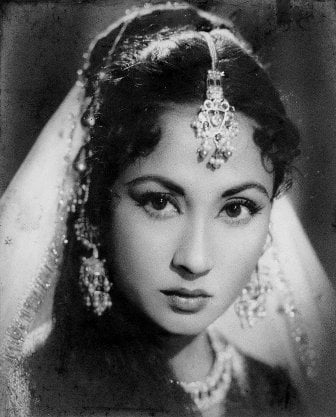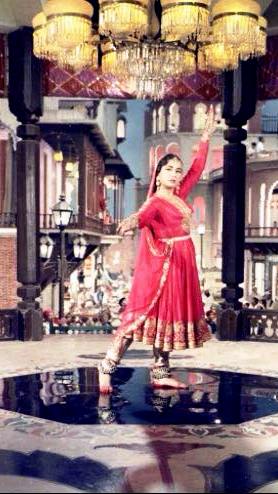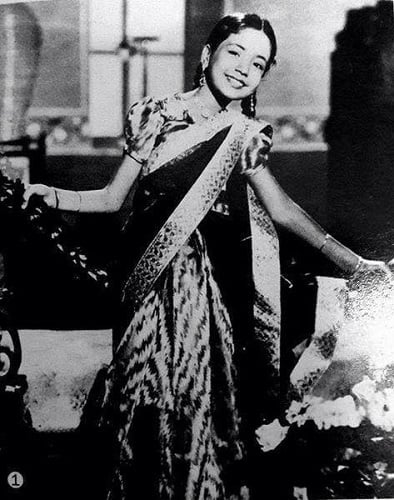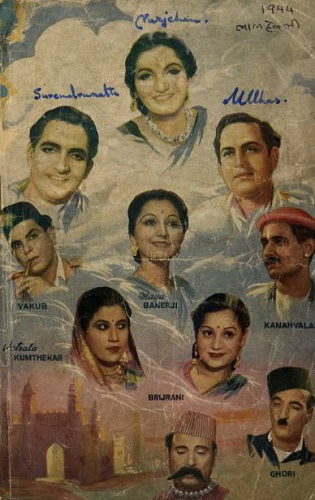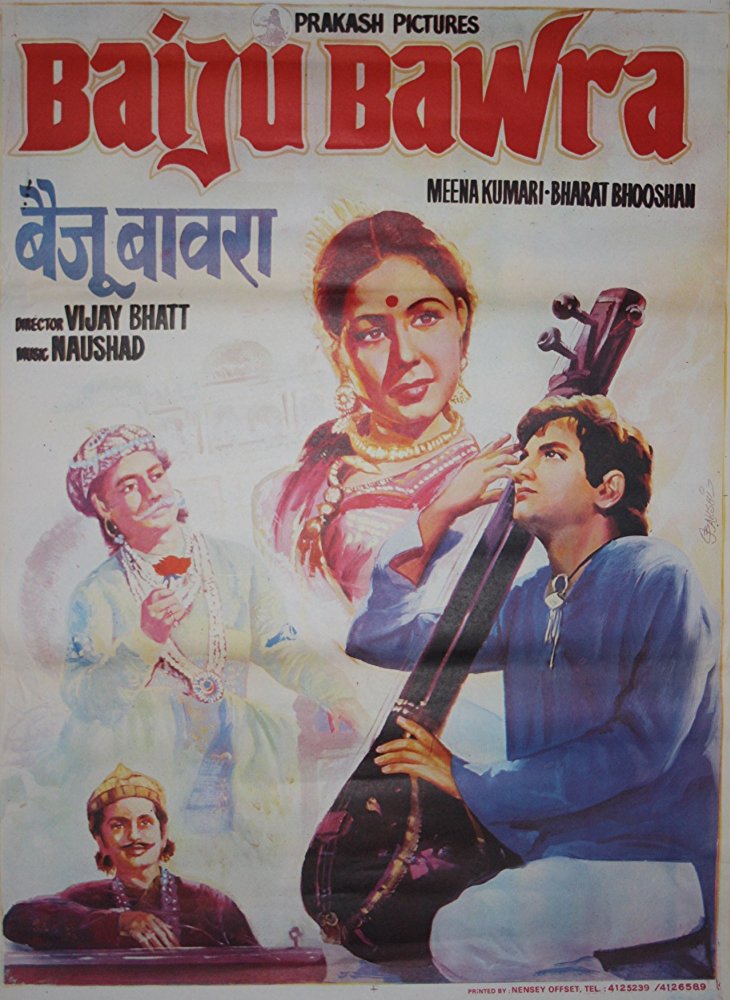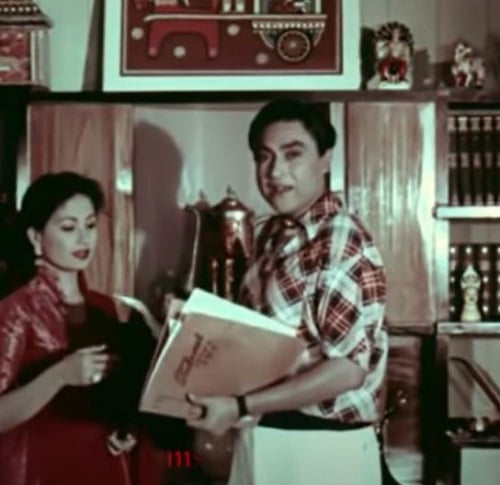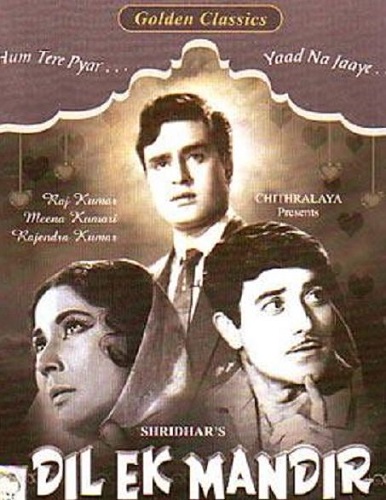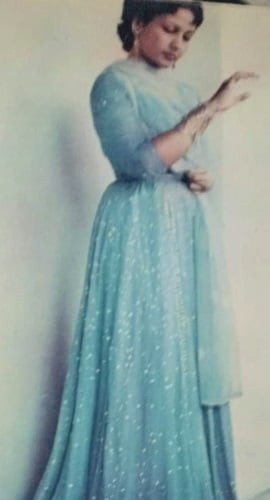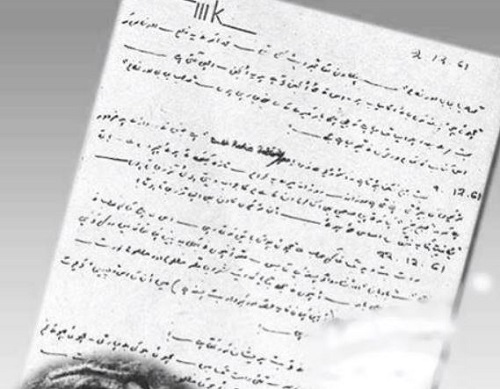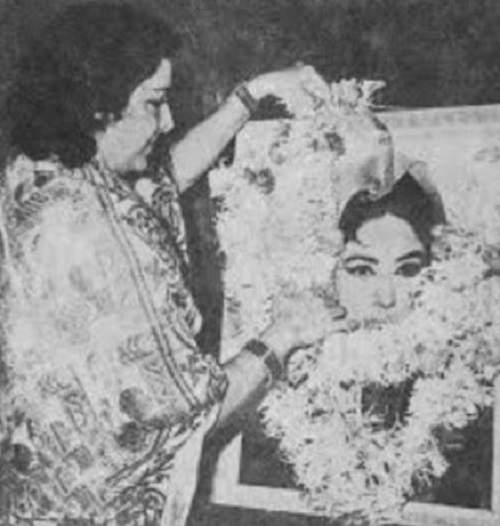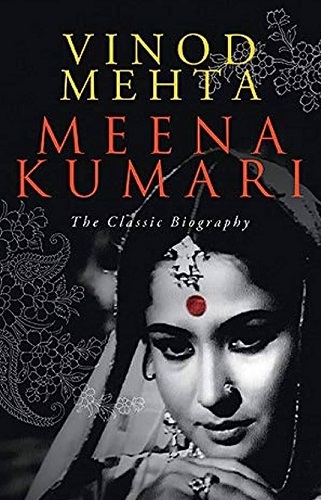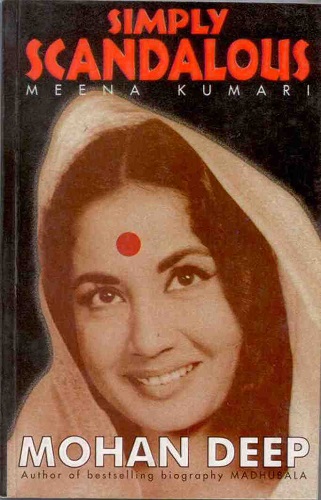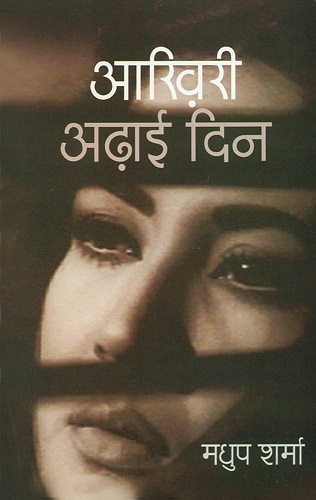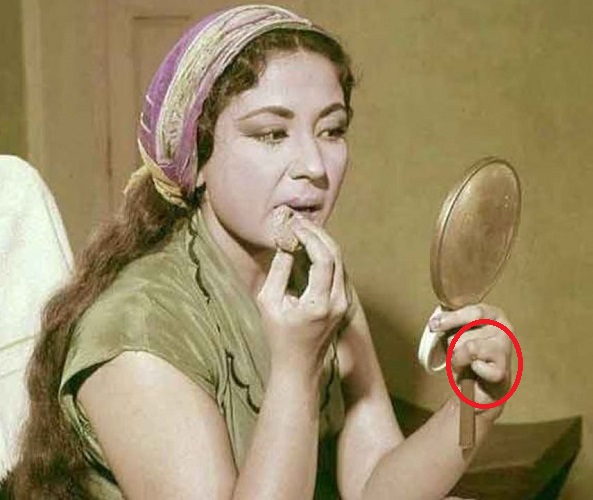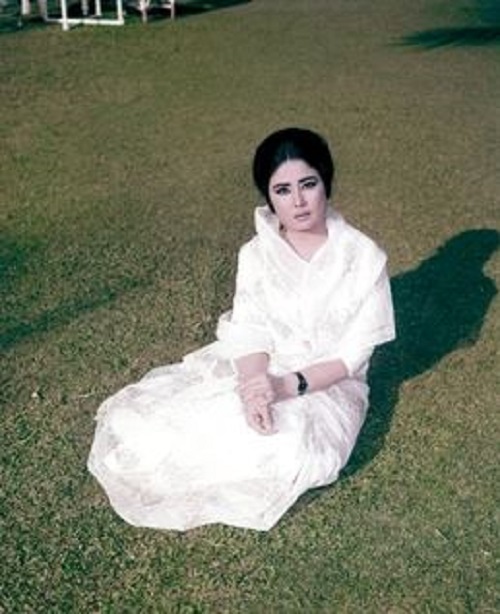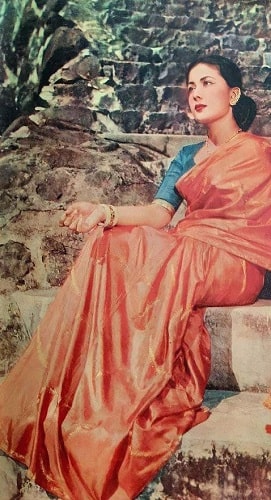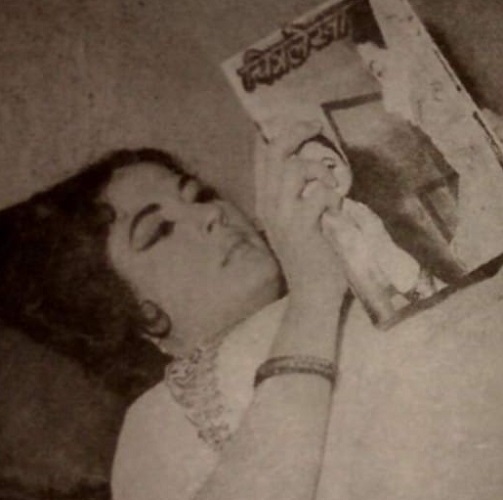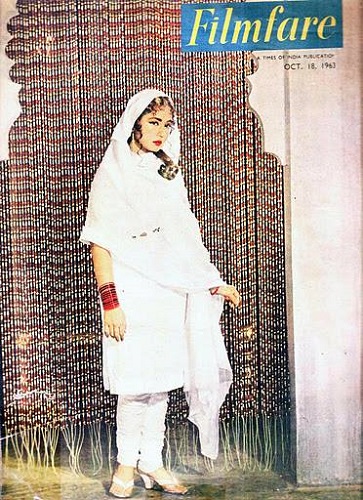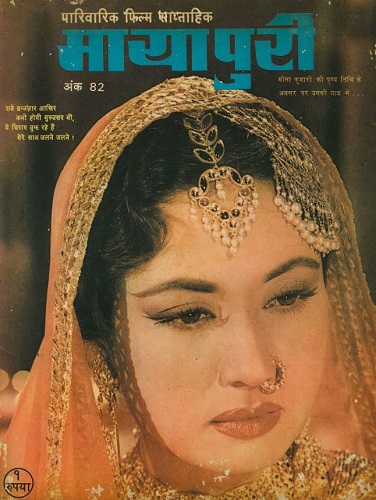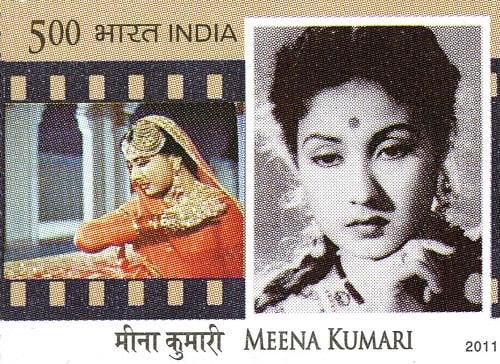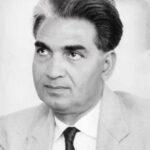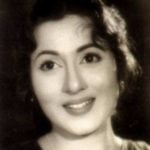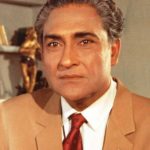Meena Kumari Age, Death, Husband, Children, Family, Biography & More
Quick Info→
Death Cause: Liver Cirrhosis
Age: 38 Years
Death Date: 31/03/1972
| Bio/Wiki | |
|---|---|
| Real name | Mahjabeen Bano [1]Bollywood Shaadis |
| Pen Name | Naaz |
| Nickname(s) | • Chini [2]Jansatta • Manju [3]The Times of India |
| Profession(s) | Actress, Singer, Poet |
| Known As | The Tragedy Queen [4]Bollywood Shaadis |
| Physical Stats & More | |
| Height (approx.) | in centimeters- 168 cm in meters- 1.68 m in feet & inches- 5’ 6” |
| Eye Colour | Brown |
| Hair Colour | Brown |
| Career | |
| Debut | Film (As an actress): Leather Face (1939) as Baby Mahjabeen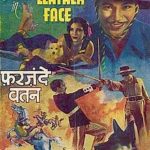 Film (As a Playback Singer): Bahen 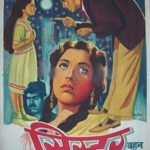 |
| Last Film | Pakeezah (1972) in the titular role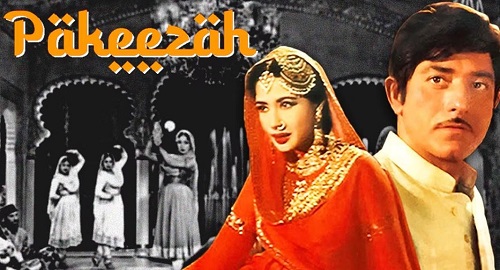 |
| Awards | Filmfare Award • 1954: Won Best Actress Award for Baiju Bawra • 1955: Won Best Actress Award for Parineeta • 1956: Nominated for Best Actress for Azaad • 1959: Nominated for Best Actress for Sahara • 1960: Nominated for Best Actress for Chirag Kahan Roshni Kahan • 1963: Won Best Actress Award for Sahib Bibi Aur Ghulam • 1963: Nominated for Best Actress Award for Aarti • 1963: Nominated for Best Actress for Main Chup Rahungi • 1964: Nominated for Best Actress for Dil Ek Mandir • 1966: Won Best Actress Award for Kaajal • 1967: Nominated for Best Actress for Phool Aur Patthar • 1973: Nominated for Best Actress for Pakeezah 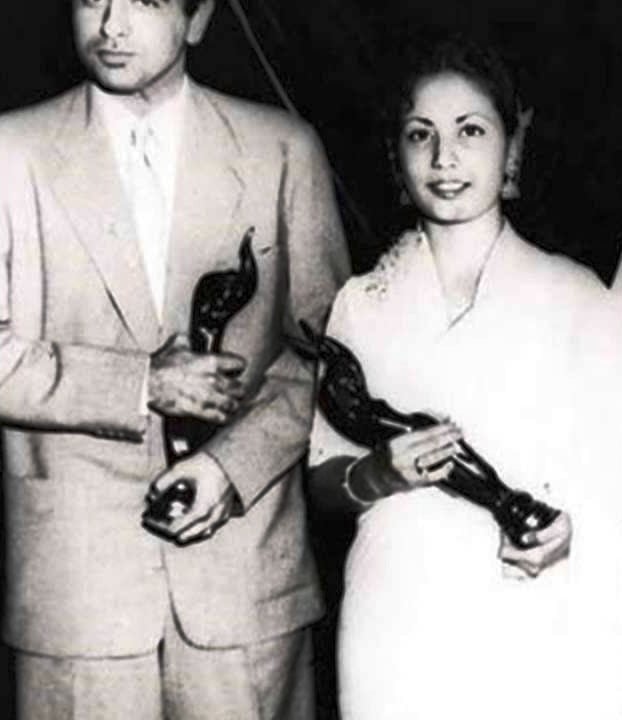 Bengal Film Journalists’ Association Award • 1958: Won Best Actress Award (Hindi) for Sharad • 1963: Best Actress Award for Aarti • 1965: Best Actress Award for Dil Ek Mandir • 1973: Special Award for Pakeezah 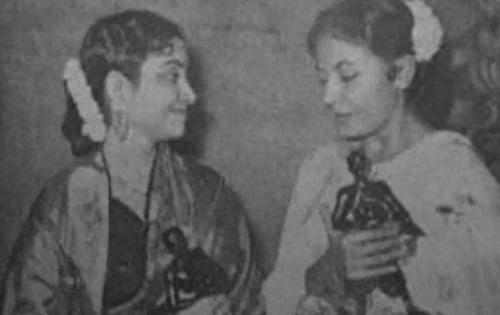 Shama-Sushma Film Awards • 1973: Best Actress Award for Pakeezah |
| Personal Life | |
| Date of Birth | 1 August 1933 (Tuesday) |
| Birthplace | Bombay, Bombay Presidency, British India (now Mumbai), India |
| Date of Death | 31 March 1972 |
| Place of Death | St. Elizabeth’s Nursing Home in Mumbai |
| Age (at the time of death) | 38 Years |
| Death Cause | Liver Cirrhosis [5]Mumbai Mirror |
| Buried At | Rehmatabad Cemetery in Narialwadi, Mazagaon, Bombay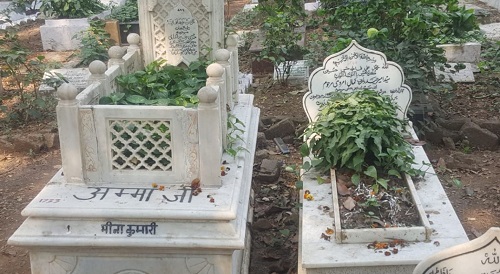 |
| Zodiac sign | Leo |
| Signature/Autograph |  |
| Nationality | Indian |
| Hometown | Mumbai |
| Educational Qualification | She did not have any formal education. |
| Religion | Sunni Muslim (from father's side) and Christian (from mother's side) [6]The Print |
| Relationships & More | |
| Marital Status (at the time of death) | Divorced |
| Affairs/Boyfriends | • Kamal Amrohi (film director) • Dharmendra (actor; rumoured) [7]The Times of India  • Gulzar (lyricist; rumoured) [8]Masala! 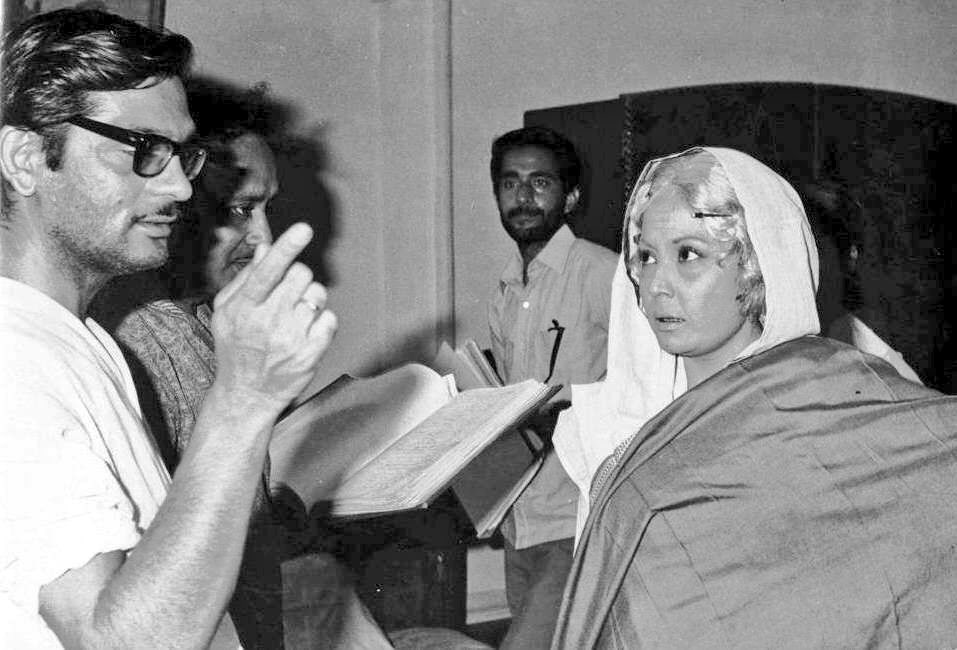 |
| Marriage Date | 14 February 1952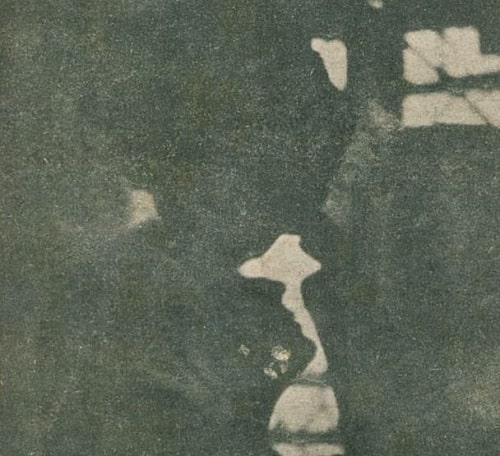 |
| Family | |
| Husband/Spouse | Kamal Amrohi |
| Children | Stepson(s)- Shandaar Amrohi (film director) and Tajdar Amrohi (film director)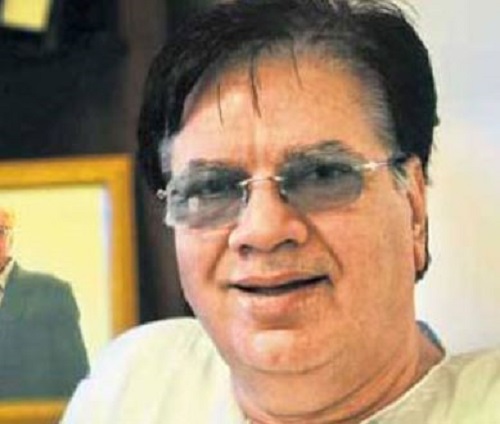 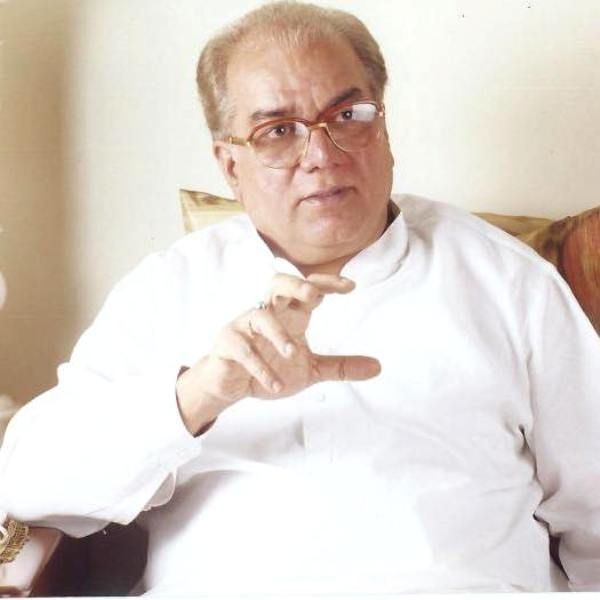 Daughter- Rukhsar Amrohi (author) 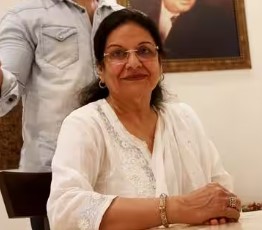 |
| Parents | Father- Master Ali Bux (Parsi theatre artist, Urdu poet, music composer, musician)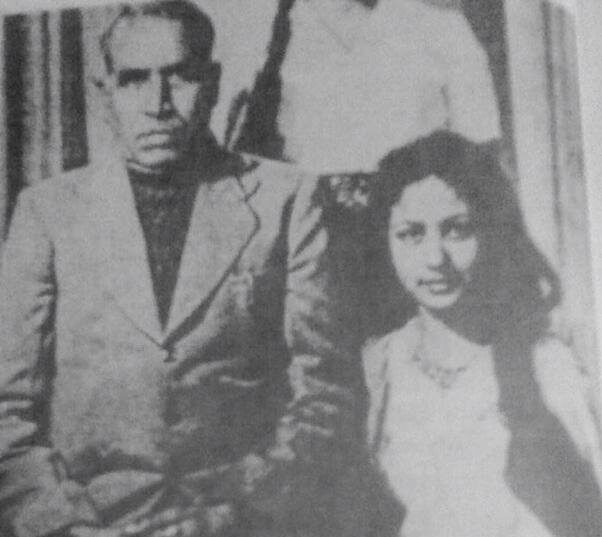 Mother- Iqbal Begum (Prabhavati Devi before marriage; a stage actress and dancer, stage name Kaamini) 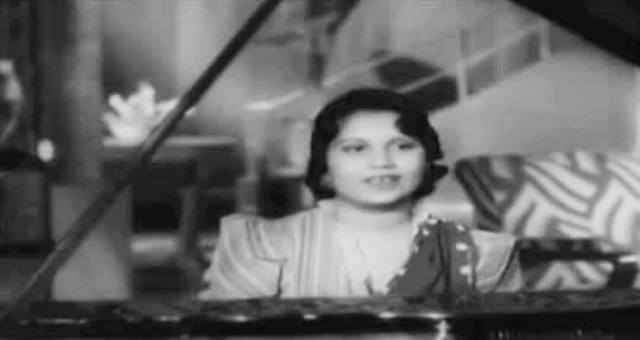 |
| Siblings | Brother- None Sister- 2 • Khursheed Bano (elder; singer) • Mahliqa (younger; known as Madhu, film actor) 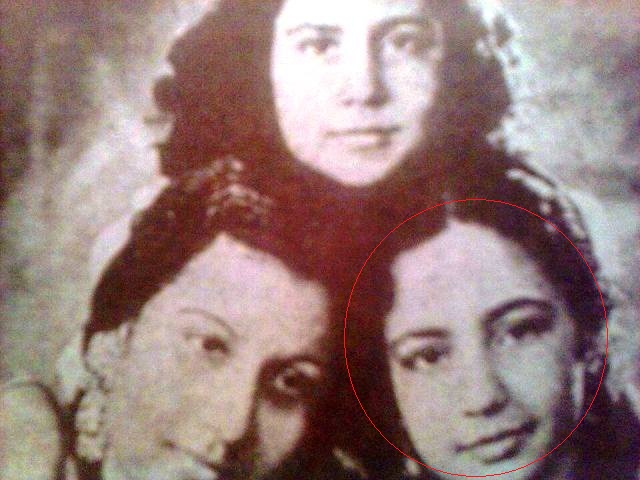 |
| Other Relative(s) | Brother-in-Law- Mehmood (comedian, actor; married to Madhu)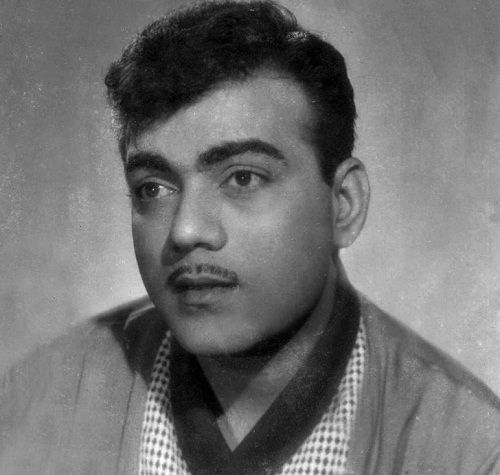 Maternal Grandmother- Hem Sundari (married to a cousin of Rabindranath Tagore)  |
| Style Quotient | |
| Car Collection | • Vintage Car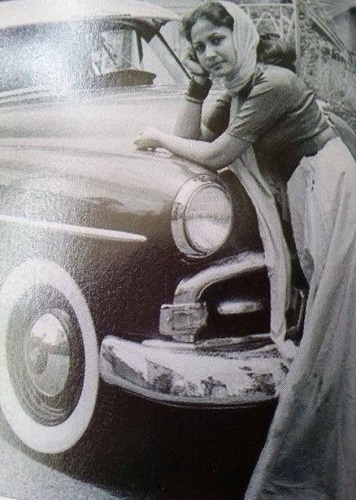 • Impala Car • Plymouth Car [9]The Sunday Guardian |
| Money Factor | |
| Assets/Properties | She owned an apartment on the eleventh floor of a building ‘Landmark’ at Carter Road, Bandra, Mumbai. |
Some Lesser Known Facts About Meena Kumai
- Meena Kumari was a popular Indian actress, singer, and poet. For her roles in the Hindi films, she became famous as ‘The Tragedy Queen.’
- When she was born, her father was disappointed as he wanted a son. Also, his financial condition was not good enough to pay the hospital bills. He then decided to leave Meena in front of an orphanage. However, when ants started biting her, she started crying, and her father decided to take her home. [10]Jansatta
- In childhood, she loved going to school and wanted to pursue higher studies. She wanted to become a lawyer or doctor. However, due to financial constraints, she started working as an actor and quit her studies. [11]The Print
- Meena and her sister loved playing games in their childhood, but their father did not allow them to play and wanted them to focus on their work; as he considered playing a waste of time.
- For the 1939 Hindi film ‘Leather Face,’ she received Rs 25 as fees with which she paid the rent of her home. During this film, she got the name Baby Meena. When someone on the set made fun of her name, the makers offered her a choice of a few other names like Kamla, Prabha, and Meena Kumari. She chose the third option. [12]Google Books
- As a child actor, she appeared in many Hindi films like ‘Adhuri Kahani’ (1939), ‘Pooja’ (1940), ‘Kasauti’ (1941), ‘Vijay’ (1942), ‘Pratiggya’ (1943), and ‘Lal Haveli’ (1944).
- In 1946, she played the role of Meena Kumari in the Hindi film ‘Bachchon Ka Khel,’ and from there she adopted the name Meena Kumari as her screen name.
- She sang in many Hindi films including ‘Bahen’ (1941), ‘Duniya Ek Sarai’ (1946), ‘Piya Ghar Aaja’ (1948), ‘Bichchade Balam’ (1948), and ‘Pinjre Ke Panchhi’ (1966).
- In the 1950s, she acted in various Hindi films such as ‘Hamara Ghar’ (1950), ‘Sanam’ (1951), ‘Madhosh’ (1951), ‘Hanuman Patal Vijay’ (1951), and ‘Aladdin Aur Jadui Chirag’ (1952).
- She started gaining popularity with Hindi films like ‘Baiju Bawra’ (1952), ‘Parineeta’ (1953), ‘Chandni Chowk’ (1954), ‘Azaad’ (1955), and ‘Mem Sahib’ (1956).
- During her teenage, she once read an article on the Indian film director Kamal Amrohi in a magazine. While reading the article, she started developing feelings for him.
- Once, while she was on the set of a film, she met Kamal for the first time through the Indian actor Ashok Kumar. At that time, Kamal was married twice and had three children from his marriages.
- Later, Kamal offered her a role in a film. However, on 21 May 1951, before the shooting of the film was started, she met with a car accident. After being in a hospital for a few months, she started developing the symptoms of depression. During that phase, Kamal stood by her and regularly visited her in the hospital. They even started exchanging letters and gradually fell in love with each other.
- After almost four months, she was discharged from the hospital. However, Meena and Kamal remained in contact over long phone calls. Soon, they confessed their love to each other.
- When Meena was only 18 years old, she decided to marry Kamal Amrohi despite their age gap of 15 years. They had a secret nikah ceremony which was completed within two hours. At that time, Meena was under physiotherapy treatment, and her father used to drop her to the clinic at eight o’clock and pick her up at ten o’clock every day. It was during this time, she secretly had a nikah with Kamal. Only her sister Mahliqa aka Madhu was with her at the time of marriage. Her parents were upset about Meena’s affair with Kamal; as he was much older than her and was already married twice.
- According to Kamal’s son Tajdar Amrohi, Kamal had placed four conditions in front of Meena before their nikah. The first condition was that after their marriage, she would not sign any new film, she would not wear modern and revealing clothes, she would not stay outside the house after 6 pm, and she would never take a lift from any co-star. Meena Kumari had agreed to all these conditions.
- Their marriage did not remain secret from the media for a very long time, and when her father came to know about it, he got very angry and insisted Meena get a divorce from Kamal. However, she refused it and stayed back at her father’s house.
- In 1953, Kamal offered her a role in the Hindi film ‘Daera,’ however her father did not approve of it and advised Meena to work in Mehboob Khan’s film ‘Amar.’ She did not want to upset her father anymore, so she decided to work with Mehboob. However, within five days of shooting, she left the film over a disagreement with Mehboob Khan and told her father that she would work in Kamal’s film. Her father got very upset over this and warned her that he would close the doors of his house for her forever. She did not pay much attention to the warning and went to shoot Kamal’s film, however, when she returned home, her father did not allow her to enter the home. Meena was left with no option and went to Kamal Amrohi’s home in Sion, Bombay.
- Meena continued her work, and in 1953, Meena and Ashok Kumar appeared in an international Dunlop UK advertisement titled ‘Dream House.’
- She then appeared in a few other Hindi films like ‘Sharada’ (1957), ‘Sahara’ (1958), ‘Chirag Kahan Roshni Kahan’ (1959), ‘Dil Apna Aur Preet Parai’ (1960), and ‘Bhabhi Ki Chudiyan’ (1961). It was only after this, she was named ‘The Tragedy Queen.’
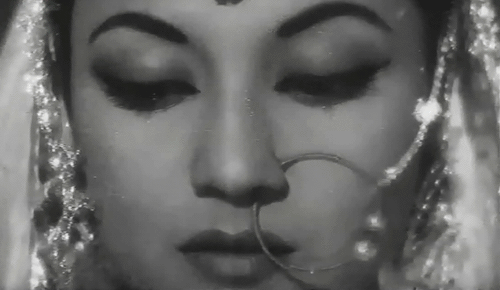
Sahara
- In 1958, she was so emotionally touched by her role as a blind woman in the film ‘Sahara,’ that she decided to start a trust for visually impaired individuals. However, her friend Nargis Dutt and filmmaker Khwaja Ahmad Abbas fulfilled her dream by starting the Meena Kumari Charitable Trust. To generate funds for the NGO, the trust organised a special premiere of Meena Kumari’s film ‘Gomti Ke Kinare’ with which they collected Rs 50,000. In October 1973, the Meena Kumari Memorial for the Blind was established.
- She received critical acclaim for her many Hindi films like ‘Sahib Bibi Aur Ghulam’ (1962), ‘Aarti’ (1962), ‘Dil Ek Mandir’ (1963), ‘Phool Aur Patthar’ (1966), ‘Majhli Didi’ (1967), and ‘Baharon Ki Manzil’ (1968).
- From 1966 to 1979, she was the only actress to win the highest number of awards in the Best Actress category.
- She has acted in a few Hindi films like ‘Jawab’ (1970), ‘Mere Apne’ (1971), and ‘Gomti Ke Kinare’ (1972; released after her death as a tribute).
- She worked in a few Hindi TV serials, mainly mythological serials.
- She appeared in TV commercials for various brands like Zaveri Jewellers and Lux soap.
- She also worked as a poet under the pen name Naaz. In 1971, her poems were released in the album ‘I write, I recite’ by the music label LP Vinyl Record, and the music was given by Mohammed Zahur Khayyam. She recited the poems in the music album. The album was re-released on 19 September 2006.
- Gradually, she became one of the best actresses in Bollywood, but her personal life was in turmoil. Kamal had become possessive of Meena. He strictly imposed his four conditions of marriage on her. There were rumours of domestic violence in their married life. However, Kamal never accepted them and called them fake. The rumours of the dispute in their marriage turned out to be true when in 1964 the couple got divorced.
- It was also said that Kamal became over-possessive about Meena due to the rumours of her extramarital affair with the Indian actor Dharmendra. [13]India Today
- According to a media source, the incident which was one of the main reasons for their divorce was when Kamal’s assistant Baqar Ali slapped Meena. It was during the mahurat of the Hindi film ‘Pinjre Ke Panchhi,’ when Meena was in a makeup room. She insisted that the lyricist Gulzar should be allowed in her makeup room, but it was against Kamal’s rules. When she kept on insisting, Kamal’s assistant Baqar Ali who used to accompany Meena Kumari on the sets, slapped her. Even after that Kamal did not say anything to Baqar. The strict conditions of Kamal gradually affected Meena’s mental health. She even consulted a psychiatrist for the same who prescribed a small dose of brandy to her to sleep better. However, this turned into an addiction, and she became an alcoholic.
- Along with her mental health, her physical health also started deteriorating. She had to consult doctors in various renowned hospitals in London and Switzerland. There she was diagnosed with liver cirrhosis. She was advised by doctors to take a break from films, but she did not take their advise and returned to India from London and resumed acting in films.
- According to the interview published in Meena Kumari’s biography written by Vinod Mehta, Vinod once interviewed Kamal Amrohi and asked him about the rumours of physical violence in Kamal and Meena’s marriage.
- Reportedly, Kamal had divorced Meena by saying ‘talaq’ three times. It was also said that Meena had performed the Nikah Halala with Amanullah Khan (Zeenat Aman‘s father) before returning to Kamal Amrohi after their divorce. [14]Amar Ujala It is said, that after returning to Kamal, she said,
Now, after this Nikah Halala, what is the difference between me and a prostitute?”
- For the 1972 Hindustani language film ‘Pakeezah,’ she lent her voice to various songs. However, instead of the film, the songs were released in the music album ‘Pakeezah-Rang Barang’ (1977). She took only a rupee as fees for the film.
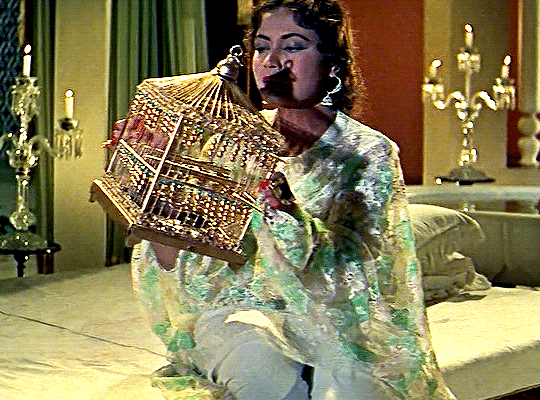
Pakeezah
- Meena Kumari and Kamal did not have any children together, so she used to take care of her stepson Tajdar Amrohi, who used to call her chhoti-Ammi.
- In 1966, she co-produced the popular film ‘Phool Aur Patthar.’
- She lent her voice to the documentary ‘After The Eclipse,’ which was produced by S. Sukhdev in 1967.
- For the 1972 Hindi film Pakeezah, she wore a lungi in the song “Mausam Hai Aashiqana” which became quite popular among girls in that era.
- She was also the presenter of a radio programme named ‘Jaimala,’ which was broadcast by Radio Ceylon.
- She was the costume designer of the 1972 Hindi film ‘Pakeezah.’ However, within a few weeks after the film was released, she fell ill and was admitted to St. Elizabeth’s Nursing Home. Within two days, she was in a coma, and she took her last breath on 31 March 1972. She had requested to write the following prose on her tombstone. The phrase was,
She ended life with a broken fiddle, with a broken song, with a broken heart, but not a single regret.”
- While she was hospitalised a few days before her demise, she used to repeatedly say,
Apa, Apa, I don’t want to die.”
- During her last few days, she used to feel very lonely. She used to place stones on her bed while sleeping as she believed that stones understood her feelings. She even said that when she cried, the stones seemed to cry with her, and when she laughed, they seemed to share her joy.
- Post her demise, her friend Nargis Dutt penned a letter in memory of Meena Kumari, which was published in an Urdu magazine. In the letter, she wrote,
Meena, Maut Mubarak Ho!”
- Nargis Dut once shared that she was aware of the turmoil in Meena’s personal life. Nargis even questioned Kamal’s secretary Baqar once. Nargis had asked,
Why do you people want to kill Meena? She has worked enough for your sake, For how long is she going to feed you?’ He said, when the right time comes, we will rest her.”
- At the 20th Filmfare Awards, Meena received a posthumous nomination for her remarkable performance in ‘Pakeezah.’ She is the only Indian actress to receive such a nomination.
- A biography titled ‘Meena Kumari: The Classic Biography’ authored by Vinod Mehta was published in October 1972 and re-published in May 2013.
- In 1979, a Hindi film titled ‘Meena Kumari Ki Amar Kahani’ was released as a tribute to her.
- In 1980, a Hindi documentary named ‘Shaira’ based on the life of Meena was released.
- On 11 February 1993, her husband passed away, and he was buried next to her tombstone as it was one of his last wishes.
- In the same year, the Indian lyricist Gulzar compiled her poems and released them in the music album ‘Tanha Chand.’
- In 1998, Mohan Deep authored an unofficial biography titled ‘Simply Scandalous.’
- In 2003, a Pakistani filmmaker shared the remake of Meena Kumari’s film ‘Pakeezah’ (1972) with Pakistani actress Meera in the lead role.
- In 2006, the Indian author Madhup Sharma penned the Hindi biography of Meena Kumari titled ‘Aakhri Adhai Din.’
- She once met with an accident while she was travelling by car from Mahabaleshwar to Mumbai. In the accident, her left hand was badly injured, and her little finger got crooked. She used to hide her left hand from the cameras as she found her little crooked finger ugly. [15]News 18
- She loved the white colour most. Various things placed at her home were in white.
- During that era, her Banarasi silk and Kanjeevaram saris set a trend. The trend is still followed by many Indian fashion designers.
- She used to always place mogra flowers by her bedside.
- Her stepson Tajdar Amrohi once shared that she loved eating paan. As a kid, Tajdar was so fond of Meena that he used to say that he would marry Meena Kumari. In an interview, he said,
Choti Ammi (Meena Kumari) enjoyed having paan with kimam. She looked pyaari when she laughed, her lips red with colour. Once as a kid I innocently remarked, ‘Choti Ammi, kaash mein itna chota nahin hota. Phir main aapse shaadi kar leta’. Baba (Kamal Amrohi), who heard this, couldn’t help smiling.”
- She loved driving cars. She bought her first car Plymouth (second-hand) at the age of 18.
- In her spare time, she used to read poetries & books, write a diary, listen to music, sing songs, and dance. She often read novels by Agatha Christie.
- She was featured on the cover of various editions of Filmfare magazine.
- She was featured on the cover of a few other magazines such as Mayapuri, Suchitra, and Madhuri.
- Meena, along with the Indian actor Pradeep Kumar, appeared in eight consecutive hit films. Their onscreen pair was considered one of the best jodis on screen.
- Reportedly, she never used glycerine to shed tears for her roles in the film. She used to cry in real for the emotional scenes in the films.

- She was once one of the highest-paid female actresses and the first one to own an Impala car in Bollywood.
- While she was shooting for the Hindi film Pakeezah, the film crew was once stranded on the road in a bandit area due to a lack of fuel in their vehicles. A dozen of bandit surrounded their cars. However, when the director of the film Kamal Amrohi explained their situation to the bandits, they provided them with food and shelter for a night. One of the bandits Amrit Lal even asked Meena Kumari to give her an autograph on his hand with a knife.
- She was listed in Box Office India’s Top Actresses list from 1952 to 1961.
- Her dancing skills received appreciation from the renowned Kathak master Pandit Lachhu Maharaj.
- In the 68th Filmfare Awards, she received all the nominations in the Best Actress category.
- In 2010, her name was listed in “80 Iconic Performances” in Filmfare’s list for her films “Sahib Bibi Aur Ghulam” and “Pakeezah.”
- In 2011, she was ranked the fourth-greatest Indian actress of all time by Rediff for her performance in the Hindi film ‘Sahib Bibi Aur Ghulam.’
- On 13 February 2011, a postal stamp with a face value of 500 paise was issued in her honour by the Indian Post.
- In 2012, NDTV ranked her at No. 3 in the most popular Bollywood actresses of all-time list. Her films “Baiju Bawra” and “Do Bigha Zameen” were recognized among the greatest films in a poll conducted by the British Film Institute.
- In a poll conducted by News 18 on the occasion of the centenary of Indian cinema, her films “Pakeezah,” “Sahib Bibi Aur Ghulam,” and “Do Bigha Zameen” were listed among the 100 best films ever made.
- In 2012, Meena Kumari’s autograph was included in the Bandstand Promenade in Bandra, Mumbai, called the Walk of the Stars.
- In 2014, another music album ‘Meena Kumari, the Poet: A Life Beyond Cinema’ with her poems and nazams was released.
- On 24 February 2016, original publicity material and memorabilia of her were showcased in an exhibition organised at the Womanhood Festival held in Osianama Liberty, Mumbai.
- In 2018, a theatre play portraying the life of Meena Kumari was performed at Jawahar Kala Kendra in Jaipur.
- On 1st August 2018, on her 85th birth anniversary, a Google Doodle featuring her was displayed as a tribute to her by Google India.
- She learnt to play table tennis from her brother-in-law Mehmood, an Indian actor and comedian.
- Her eyes were considered the best feature of her body. Her sharp-winged eyeliner style also became popular.

- She was well-versed in various languages such as Urdu, Hindi, English, and Bengali.
- She also enjoyed playing the harmonium and painting.
- She bought a few properties in Mumbai and started a real estate business.
- She loved working with the Indian actor Dilip Kumar.
- While she was earning good from the acting projects, she used to help everyone. However, during her last years, she faced financial difficulties and spent that time in loneliness.
- Inspired by her life story, a few Indian filmmakers expressed their desire to make a film on it. However, the films were shelved.
- Later, a TV series was directed on her life in which the role of Meena was portrayed by Raveena Tandon.
- In 2023, the Indian fashion designer Manish Malhotra shared that he would make a biopic of Meena Kumari. As soon as he announced it, Meena’s stepson Tajdar Amrohi raised objections over it as no one took permission from Meena’s family members.
- At the 70th Filmfare Awards (2025), Meena Kumari was remembered with the Honorary Cine Icon Award for her lasting contribution to Hindi cinema.
References/Sources:

